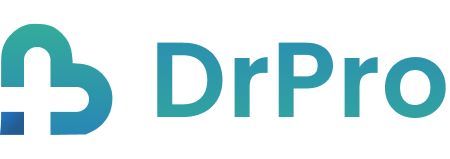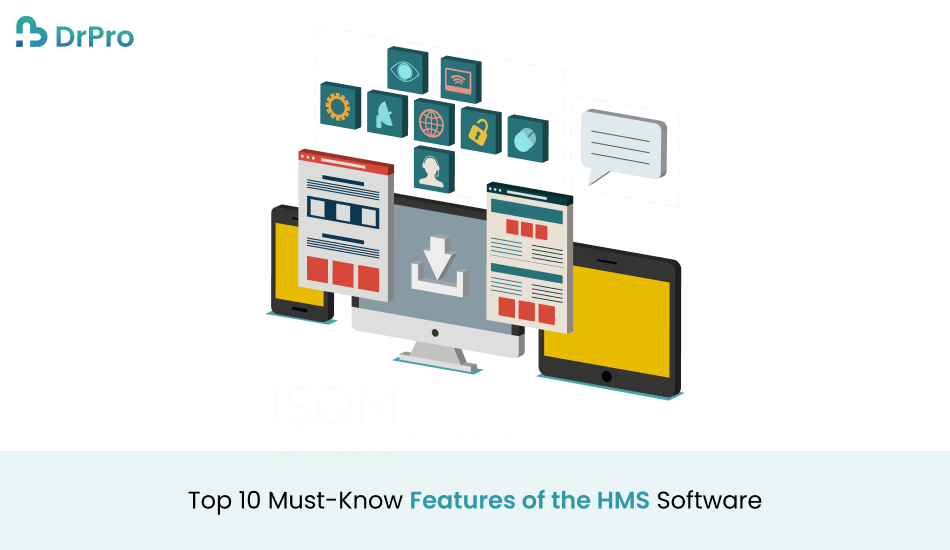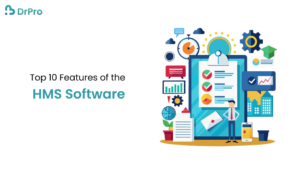Quick Summary
It is established that the healthcare industry is a dynamic area and proper management is crucial for quality of operations. Healthcare Management Systems are essential tools in the operation of healthcare facilities with enhanced patient care. HMS software is described in this article about why healthcare institutions should use it and the top ten features that must be known to improve its use. Knowledge of these features will enable healthcare workers to choose the right HMS for their practice.
Introduction
From a manager’s perspective, the theme of the day is operational efficiency in present-day healthcare systems. Many healthcare professionals who are confronted with short staffing, time constraints, and legal requirements struggle to meet the clinical, daily operational, and compliance expectations. This is particularly where the need for a Healthcare Management System (HMS) comes in handy. HMS software harmonizes several tasks within a hospital or clinic making service delivery efficient.
Whether it is appointment setting, patient data management, or timely billing of patients, the appropriate HMS can greatly decrease the clerical load on the health care personnel on duty. As there are many HMS solutions available in the market, how can you identify what are the key essentials to look for As a healthcare provider? In this article, I will explain why HMS is needed and the top 10 facts and features you should be aware of.
Why Use the Healthcare Management System?

This paper presents arguments on why Healthcare Management Systems have become important structures in healthcare delivery for the following reasons. Here are some compelling reasons why healthcare institutions are adopting HMS:
Improved Patient Care:
Through real-time access to patient information, doctors are better placed to make appropriate decisions due to increased accuracy in diagnosis and subsequent treatment.
Efficient Operations:
There are numerous activities, including appointment booking, invoicing, and stock management, performed through the HMS Software, which otherwise could consume a considerable amount of staff time.
Data Centralization:
Since the message, patient, and hospital data are incorporated within one program the department, coordination between the departments is easily done and the information is easily and securely retrieved.
Regulatory Compliance:
Through the HMS software, the hospital’s compliance with local and international standards and regulations and legal implications are reduced.
Cost Efficiency:
Thus, the automation of these activities and the optimization of resources through an HMS increase the economic profit of the hospitals.
Top 10 Features of the HMS Software
Electronic Health Records (EHR) Integration:
Electronic Health Records (EHR) Integration Based on the research, HMS software is always designed to integrate with Electronic Health Records (EHR). This feature allows patient details and the history of all the patients in the hospital to be stored and retrieved by the allowed personnel after logging in. Integration of EHR emanates the flow of data from one department to another to enhance patients’ management or decrease repetitious testing or treatment errors. Also, it helped to increase patient safety since all the data about the patient’s history are available to the healthcare professionals which will help them make the right diagnosis and make the right decision when it comes to the treatment of the patient.
Appointment Scheduling and Management:
Appointment Scheduling and Management Appointments are important facets of any healthcare facility and their scheduling has to be done efficiently. Patients can schedule appointments through the web or phone while extension and provider specialists can oversee their timetables. The system can work with several schedules at once and can notify patients to reduce no-shows. Also, patients can cancel, or reschedule their appointments through the system an aspect that enhances patient satisfaction. This feature also assists in staff time management because some patient appointments are well coordinated with available resources.
Billing and Revenue Cycle Management:
Billing and Revenue Cycle Management Billing and Revenues Cycle Management an inevitable feature of an HMS enables hospitals to manage their invoicing, claim processing, and payments collection processes. This type of software is fully responsible for providing bills and tracking payments, and the whole process is fully automated and thus is free from many human errors. It also has links with insurance companies to facilitate fast claims, which enhances cash flow in the hospital and increases the time it takes for payments to get to the hospital. Further, it helps the hospitals to prepare various financial reports for managing the hospital’s needs and audit requirements.
Inventory and Supply Chain Management:
Inventory and Supply Chain Management As a concept in healthcare, inventory management requires appropriate management to minimize overstocking or understocking of important stocks. The Inventory and Supply Chain Management tool in the HMS software regards the inventory constantly and lets the hospital staff know the conditions when the inventory is running low. It guarantees the availability of all the medical supplies, equipment, and pharmaceuticals so that there will not be any time when they are not around hence there will not be a time that patients are delayed. It is also able to provide inventory used reports whereby the hospital management can decide on what to prioritize in terms of purchasing to minimize wastage.
Patient Portals Patient Portals:
Patient Portals Patient trace platforms where patients have access to their records, test results, and appointments. Such windows allow engaging with providers, receiving educational materials, and reviewing personal health information. The opportunities with patient portals contribute to patient satisfaction and enhance the utilization of value-based care. Also, it allows patients to make payments, request prescription refills, and receive personalized notes regarding check-ups, which enhances patient satisfaction.
Telemedicine Support:
Telemedicine Support An HMS software is incorporated with Telemedicine because as the world has gone digital the practice of healthcare has also shifted online. Telemedicine helps doctors consult patients through calls and ask about their feelings through video or audio since patients cannot visit hospitals physically. This feature is particularly helpful in rural settings since there are few medical centers, especially in developing countries. It also enables doctors to make arrangements to meet patients after they have been discharged from treatment, improving the follow-up. Interoperation with the HMS makes it possible to record telemedicine consultations as well as the updating of patient records.
Lab and Diagnostic Management:
Lab and Diagnostic Management This can be defined as the key process area in managing hospitals’ laboratory and diagnostic services. The Lab and Diagnostic Management feature: As an umbrella for ordering tests, tracking samples, reporting results, and interface to records. It reduces human interference in the outcomes and guarantees their fast delivery to the right medical practitioners. The system can also elicit messages to the patients when their results are ready hence enhancing healthcare delivery. An automated process means that such information is reliable and disseminated to the concerned patients and other healthcare personnel.
Compliance and Reporting Tools Compliance
The guidelines of healthcare standards of a country or internationally have to be complied with in the hospitals. Guidelines and Policies/Tools for Monitoring and Reporting Specifically, in terms of discrete compliance requirements, the HMS software includes modules that demonstrate how the hospital complies with these standards or regulations. These tools also produce reports that are useful when auditing and regulatory submission hence making it easier for hospital administrators to comply with healthcare laws. Further, the reporting tools can produce performance and outcome information about the hospital, which may in turn improve managerial decision-making.
Doctor and Staff Management Doctor and Staff Management:
Doctor and Staff Management The Doctor and Staff Management option is used to manage a workforce of hospitals more efficiently. The HMS software can be utilized by the administrators to monitor the staff schedules, create their lists, and apportion workload among staff members. It can also review the performance of individuals on staff and provide a report of their usage of human resources. To the doctors, the system provides solutions for appointment scheduling accessing the records of their patients, and cooperation with other departments. It also facilitates secure communication among doctors, nurses, and any Other healthcare implementing hospital improvements.
Mobile Accessibility:
One of the elements that are a crucial priority in the present day is mobility, and this is why HMS software has to contain the Mobile Accessibility option. The application empowers doctors, nurses, and other administrative staff to work with records of patients, appointments, and others through the mobile plans. This feature increases adaptability since the healthcare providers can provide care, regardless of their availability within the hospital. Mobile access also ensures that key information is available where it matters most, the point of care; this translates to effective use of time and therefore effectiveness of health delivery systems.
Conclusion
Healthcare Management Systems have now emerged as a major innovation in organizing the delivery of healthcare services in hospitals or clinics and providing increased patient care, increased administrative efficiency, and good compliance with the standards. Therefore, with the aid of appropriate HMS software, a healthcare institution will be better placed to enhance its functionality in order to enhance the results of patient care. I have described ten must-have features in any HMS software to help healthcare providers optimize services while staying within the confines of available resources.
Having all these features when choosing an HMS will enable providers to achieve their aims whether they are a clinic with a few practitioners or a hospital with multiple crews.
The collaboration between ProjectTree and DrPro ensures a comprehensive approach to managing projects and healthcare systems, optimizing both processes.
FAQs
Q1. What is the primary purpose of HMS software?
HMS software is designed to streamline healthcare facility operations, including patient management, billing, inventory, and staff coordination.
Q2. Can HMS software integrate with existing systems?
Most modern HMS solutions offer integration with other software, including EHR, laboratory systems, and billing platforms.
Q3. How does HMS improve patient care?
HMS ensures that patient data is readily accessible, which enables healthcare providers to offer timely and accurate care. Features like telemedicine also enhance care accessibility.
Q4. Is HMS software suitable for small clinics?
Yes, HMS solutions can be customized to meet the needs of small clinics as well as large hospitals, making them versatile and scalable.
Q5. What security measures are in place in HMS software?
HMS software typically offers advanced security features, such as data encryption, user authentication, and access control, to ensure patient data is protected.



